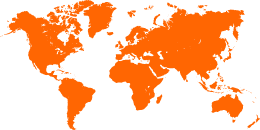Make the most of the available space and height. If you want to save here, don’t get these errors anywhere else compensated! Insulate your roof and basement first. Especially the basement ceiling and the crawl spaces/cellars that are common in the Netherlands. Then the walls and other surfaces. Open-cell foams are often cheaper and go easy on your budget. However, they cannot be used everywhere. Important changes aimed at the development of energy-efficient construction are regularly introduced or changed in national or local regulations on the construction of houses. The new regulations are primarily concerned with a gradual reduction of the heat transfer coefficient for the building envelope, which will reduce energy demand. Thanks to these legal standards, newly built houses are more energy-efficient and help their owners to save money. According to the current Polish regulations, the heat transfer coefficient for roofs and flat roofs must be a maximum of U=0.18, and from 2021 – U=0.15. Which in the case of utility attics means that an open-cell PUR layer with a thickness of 20 and 24 cm respectively must be used. In Germany it is U=0,24 for roofs and mostly closed cell foam is used. In Netherlands are Rd-Values important. One often used value is Rd=3,5. That means a layer of minimum 8 to 9 cm of our Ekoprodur S0330 or S0331FL needs to be sprayed. Or more of course.
Regardless of the thickness, it is recommended that in attics the wooden structure be insulated starting from the front of the rafters to ensure the continuity and seamless insulation of the entire roof. The technical rules and laws are on national base very different. You will maybe need help of experts to archive the best result. Or maybe to receive subventions for your projects. Ask your local Ekoprodur application company or an energy consultant for advice.


